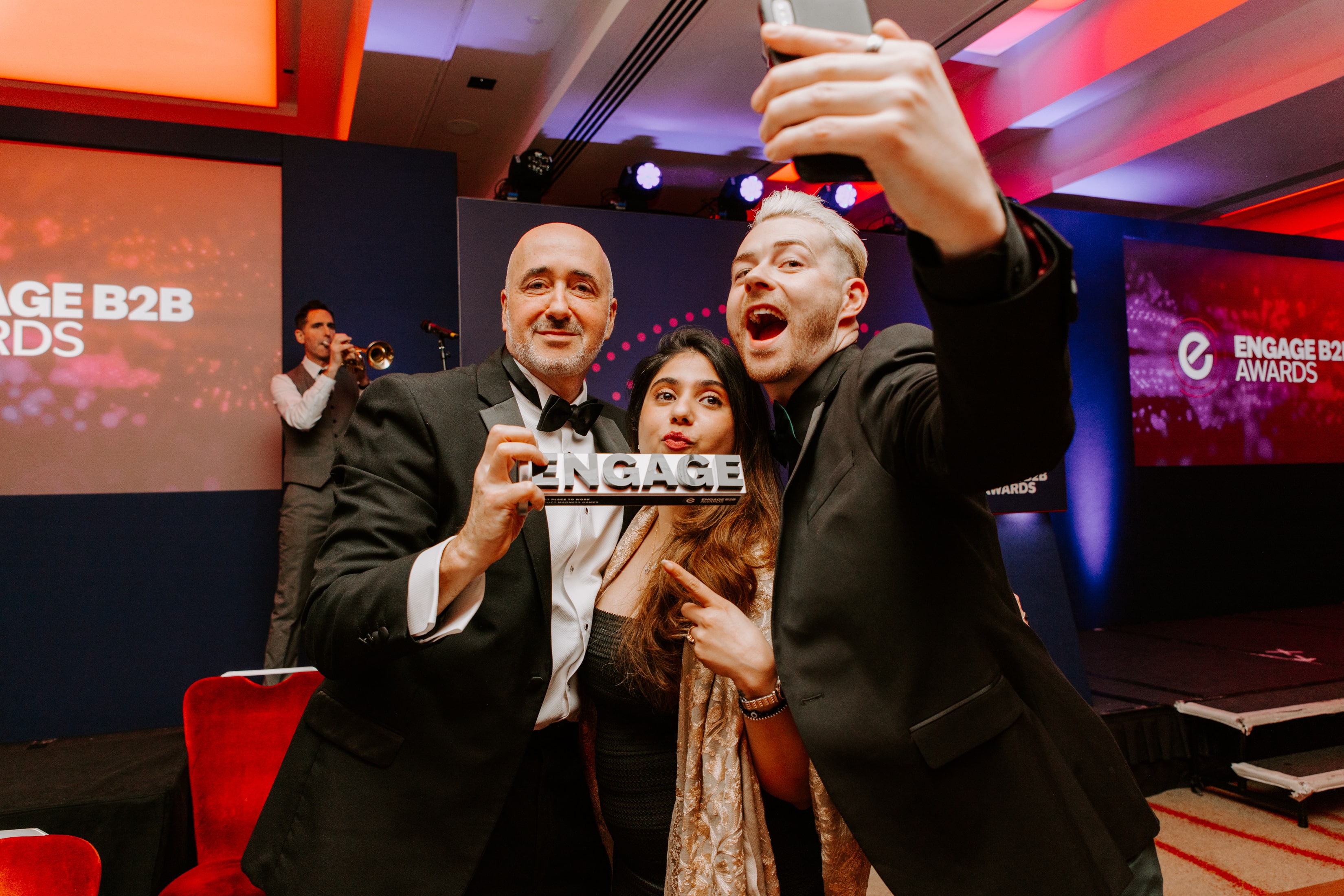Leading with Customer Centricity: Insights from Ekaterina Mamonova

An interview with Ekaterina Mamonova, Global Marketing and Customer Experience Lead at Allianz Commercial looking at the current state of B2B marketing and how to prep for the future.
Hello! Please introduce yourself and your current role
My current role is Global Marketing and Customer Experience Lead at Allianz Commercial. As part of the wider Global Distribution team, I am responsible for the development and implementation of global initiatives focused on Customer Centricity. I am incredibly lucky to be working closely with all key functions across the business – Underwriting, Claims, Multinational, Risk Consulting, and others – to ensure that Allianz Commercial is not only providing excellent experience at all key touchpoints, but is also communicating our value proposition to the market in a clear, consistent way – helping Allianz become the insurer of choice for our valuable clients and broker partners.
My path to customer experience, and to customer experience in insurance specifically, was rather non-linear – looking back, I now realise it was a natural evolution, based on a mix of in-house and agency experience in research, sales, account management and business development across financial services, technology and oil and gas sectors. One of my key professional principles is “regardless of what you do, remember that you are working with people – and for people”: insurance is a very people-focused and people-driven business, and in the commercial insurance space both end clients and broker partners are our valuable customers – so we are striving to provide outstanding experience to both.
What do you see as the key challenges B2B marketers are facing in 2024?
Forrester conducted their Marketing Survey earlier this year: almost 900 global B2B marketing executives and operations leaders indicated they expected an overall marketing budget increase. More specifically, almost 70 expected their technology budget to increase, 3 out of 5 respondents anticipated a larger programs budget, and just under 60% projected to spend more on personnel. What’s critical, is that these increases are typically coupled with equally high expectations to increase marketing’s impact on business revenue and growth.
Thinking about a broader set of challenges, based on the results of the study, poor data quality and accessibility, and a lack of clarity and/or alignment pertaining to business goals and objectives stand in the way of progress. From an external perspective, changing economic conditions and brand perception that doesn’t reflect their organisation’s desired corporate identity or business strategy were also marked as some of the key challenges.
Privacy concerns and data regulations are at the top of business agendas, too: as data breaches become more common and consumer privacy concerns grow, businesses will need to take a more transparent and ethical approach to data collection and ensure that they comply with regulations. In 2025 and beyond, we can expect to see even stricter data regulations and heightened expectations from consumers: according to a recent survey by Pew Research, 4 in 5 consumers consider transparency about how their data is being used as a critical factor in trusting a company – so it’s absolutely essential to get this right.
Artificial intelligence (AI) and automation is transforming the global marketing landscape: practitioners will need to adapt to the new technologies and find ways to integrate them into their strategies while still maintaining a human touch. The challenge will be finding the right balance between automation and personalisation to create engaging experiences that resonate with consumers. Integrate AI strategically – keeping the customer experience at the forefront, by combining automated processes with personalised interactions to create a harmonious marketing approach. Key to success here is embracing a culture of continuous learning, investing in training and development opportunities, and staying informed through industry networks to navigate the dynamic technological landscape effectively.
As more and more information becomes available, marketers will also need to find ways to cut through the noise and deliver targeted messages that resonate with their audiences. This will require a deep understanding of customer needs and behaviours, as well as the ability to create customer-focused experiences that stand out from the crowd. I would start with conducting in-depth audience research and leveraging creative storytelling to create content that resonates with the business’ target audience: the average attention span has dropped from 12 seconds to just 8 seconds over the past two decades, so it’s essential to engage your potential customers within the first few seconds of being exposed to your content.
On the flipside, what do you view as the key opportunities for marketers in 2024?
We’ve covered this topic briefly already, but, undoubtedly, the use of artificial intelligence (AI) in the coming years not only promises to increase efficiency and improve customer contact in the B2B marketing, but also the opportunity to develop innovative marketing strategies through data-driven insights. In the area of content creation, AI enables a new dimension of personalisation. AI tools can learn from large amounts of data and generate content that is tailored to specific customer needs: AI-supported systems can recognise patterns in customer interactions and make suggestions for relevant topics or content formats based on this. This promotes deeper and more meaningful customer engagement without replacing the need for human creativity and empathy in content marketing. AI also plays a crucial role in marketing automation by helping to make campaigns more efficient and targeted. Intelligent algorithms can help to better understand customer behaviour and adapt marketing measures in real time to maximise campaign performance. It is important, however, to use AI as a complementary tool that supports creativity and strategic planning rather than replacing them.
Content marketing, in general, is also a great opportunity in the B2B space: this reflects the increasing importance of authentic and valuable content that goes beyond traditional advertising messages and offers real added value. Content marketing in the B2B sector goes beyond mere product information and includes storytelling and the development of brand identity. Texts, images and videos play a central role in presenting complex products and services in an understandable and appealing way: we use this approach extensively in Commercial Insurance. The ability to arouse emotions and build a relationship with the customer remains the domain of human creativity: in the B2B context, emotional touchpoints and high-quality narratives are necessary as they help to make complex information accessible and appealing, so we strive to create a content that resonates and tells a story that is both informative and engaging.
Another opportunity I would like to highlight is employer branding, which goes far beyond traditional recruitment. In an increasingly competitive labour market, branding as an employer is becoming more and more important in order to attract and retain talent. Corporate brand ambassadors play a crucial role in building an authentic and appealing employer brand. Their real-life experiences and stories convey a credible and positive image of the company. The effective implementation of employer branding requires close collaboration between HR, marketing and management. A coordinated strategy that reflects both the corporate culture and the brand values establishes a coherent and convincing employer brand.
What are the main initiatives you’re currently working on to further align marketing and customer experience?
Allianz Commercial is a truly customer-centric organisation, and we ensure that the business decisions are supported by market insights and the feedback that we get from our clients and broker partners. This approach helped us build an extensive library of best practices, and I would like to share a few of those, specifically focusing on Marketing and CX alignment.
What do we mean by customer experience? It is the total sum of every engagement a customer has with the brand, which could include everything from customer emails to in-person meetings and events, to social media presence, to website navigation and usability. With this in mind, the best way to ensure that your marketing strategy is geared towards customer experience is to focus on how you can embrace new behaviour shifts and ensure that customers are kept happy. Knowing how customers interact with your brand will allow you to determine the channels that are driving the most results.
Typically, collaboration and alignment between Marketing & CX teams come down to the following:
• sharing customer insights.
• enabling the creation of targeted marketing campaigns.
• creating personalized nurturing experiences.
In order for this venture to be successful, though, these teams need to have a common goal – and, subsequently, a set of universal KPIs and metrics. Here are some tips for bringing the agendas of Marketing & CX closer together:
• Continuously monitor relevant metrics and key performance indicators to gain insights into customer behavior, preferences, and satisfaction levels.
• Identify and prioritize initiatives that align with delivering exceptional CX and maximizing customer value.
• Analyse customer buying patterns to identify trends and preferences, enabling better targeting and tailored marketing strategies.
• Develop detailed profiles of ideal customers to guide marketing efforts, ensuring messaging and campaigns resonate with the target audience.
• Map out the entire customer journey, including touchpoints, pain points, and opportunities for improvement. This helps identify areas where marketing can enhance CX.
• Address areas of improvement, such as optimizing customer service, eliminating friction in the purchasing or renewal process, and continuously improving products based on customer feedback.
• Develop strategies to retain customers by providing ongoing value, personalized experiences, and loyalty programs.
Thinking about the key metrics for evaluating the impact of integrated Marketing & CX, besides the Net Promoter Score (NPS), I’d recommend considering the following:
1. Customer Retention Rate: highlights the effectiveness of marketing and CX strategies in keeping customers engaged. This rate shows how successful customer relationship management is and reveals its positive impact on brand growth.
2. Customer Lifespan: refers to when a customer remains engaged with your brand or continues to purchase. Businesses can use it to assess the long-term impact of integrated marketing and CX efforts. In the long term, optimizing this metric will drive revenue growth.
3. Customer Lifetime Value: measures the total value a customer brings to a business over their entire relationship. A focus on CLV means an emphasis on nurturing and retaining high-value customers, resulting in sustainable growth.
Looking to the future, what do you predict for the future of B2B marketing and how can we prepare for it?
I think it’s truly important to recognise that traditional B2B marketing tactics are no longer enough: B2B marketers need to understand the new generation of buyers and deliver the customer-centric experience they expect. Those who recognise and embrace this change, adopt AI tools and video best practices, and engage consumers with high-quality content, will stand out throughout the buying journey, from awareness to decision-making.
Just like any shopper, business-to-business (B2B) buyers are increasingly turning to digital platforms to discover, research, and make purchases – so it’s essential to drive engagement throughout the buying journey: there’s a perception (or, rather, a stereotype?) that business buyers are serious, rarely act on emotion, and seek out solutions on a limited range of professional platforms. As a result, marketing efforts have been largely focused on channels at the bottom of the funnel with “no frills”, response-led messaging.
But the new generation of business buyers expects more. To drive consideration among this digitally native audience, marketers need to ensure the purchasing journey — which is generally longer due to the higher price point of B2B products — is personalised and engaging at every touchpoint. And it’s rarely just one person making the buying decision — research by Bain and Google revealed that today’s B2B buying committees have an average of 17 cross-functional stakeholders, further increasing the opportunities to influence buying decisions.
There’s also a great opportunity to focus on the bigger picture by balancing volume with value. Many B2B operations sit on a wealth of first-party insights from mailing lists, website purchases, and offline sales data. But they aren’t always tapping into their full potential, both due to the longer sales cycles and the time it takes to feed offline data back into marketing platforms. This is a missed opportunity, particularly when it comes to measuring customer value — a key practice for B2B businesses with niche audiences. Whereas most B2C brands drive growth by focusing on scale, B2B businesses tend to focus on value through account-based marketing — a strategy used to hone in on a specific set of accounts within a given market.
Lastly, I would like to highlight the development of new Marketing KPI’s: businesses are working hard to ensure predictable outcomes in this landscape of increasing buyer sophistication and market complexity. New metrics will, most likely, emerge in segmenting customers and marketing activity in general. In a business world where data and privacy are be paramount, marketers will pay for customer feedback and data, and paid metrics like pay-per-click will transition to customer-centered metrics (pay-per-customer feedback or data). New frameworks will emerge around B2B customer diagnostics, as early diagnostics can ensure a good customer experience and referral rates. Customer diagnostics will be used as proactive marketing tools rather than end-of-customer lifecycle KPI tracking. Being authentic and building trust with your audience will be critical factors for success in the coming years, and new KPIs will emerge to track these essential dimensions. The exact correlation will be between the digital platforms you enable to power your targeted audience’s authentic voice and your company branding metrics.


